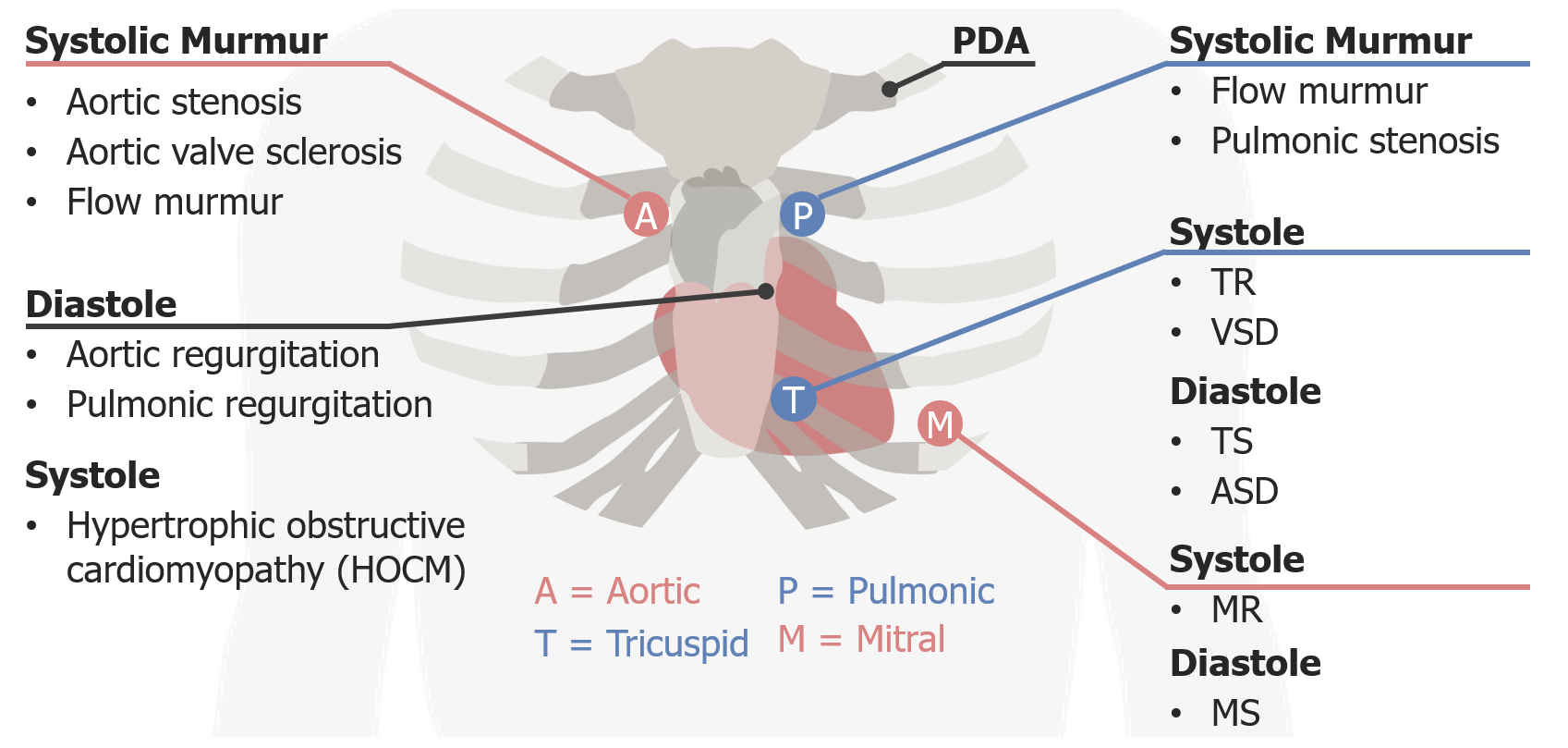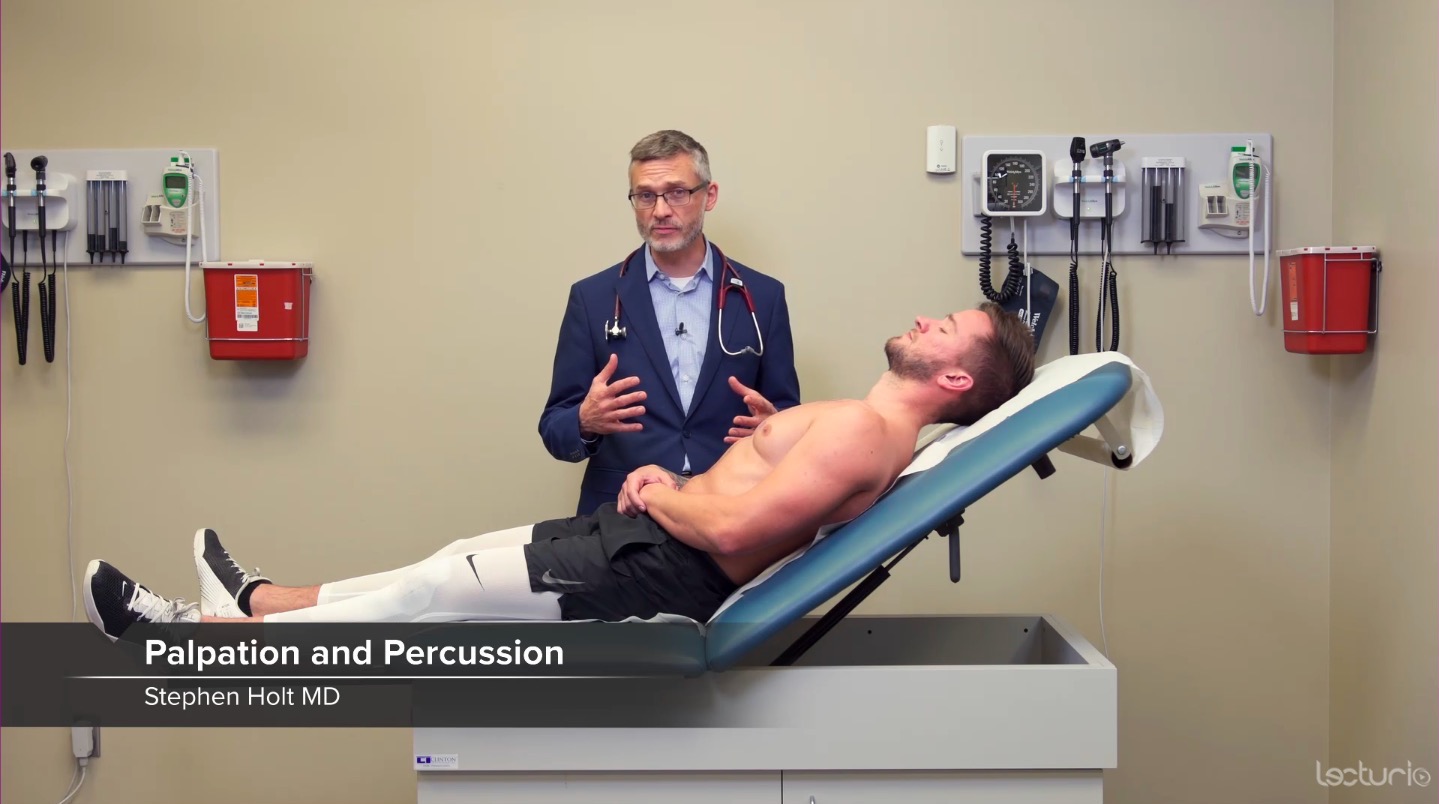Playlist
Show Playlist
Hide Playlist
Auscultation of the Heart: Systolic Murmurs
-
Reference List Physical Examination.pdf
-
Download Lecture Overview
00:01 Alright, so having talked about the heart sounds, S1, S2, S3, S4, let's talk about systole, and really focus on murmurs that occur during systole now. 00:10 Whenever we describe a murmur, there's going to be a few features that will come up every time we talk about one, and I have a little mnemonic that I use called LISP-T. It's not for everybody, but it works for me. 00:21 The L stands for location, where's the murmur located? I is for intensity, another way of saying that is the grade of the murmur and this is rated basically from 1 to a 6. 00:31 A 1 out of 6 murmur is very subtle, you could put the stethoscope on the chest and you really have to be in the right location, the room has to be quiet and it has to be just you're able to really focus and pay attention on what you're hearing to catch a 1 out of 6 murmur. 00:44 A 2 out of 6 murmur is the more typical murmur that you're going to pick up and that your average medical student is going to pick up with you. 00:50 A 3 out of 6 murmur and a 4 out of 6 murmur are increasingly loud up to the point where a 5 out of 6 murmur you could hear with only an edge of your stethoscope on the chest and a 6, allegedly, you could hear with your stethoscope even hovering above the chest. 01:06 So those are the intensity of the murmur. 01:09 S is the shape of the murmur. 01:11 Again, my LISP-T acronym. S is the shape and what we're describing there is essentially the contour whether it's ascending and descending in amplitude or simply strictly descending, or if it's holosystolic, that is it's the same amplitude throughout systole. 01:29 And then the next part is P. P is for the pitch. 01:33 As we've already talked a little bit, some murmurs or sounds are lower in pitch and some are higher in pitch, so we'll be listening to that. 01:41 And then lastly is the timing, when is it occurring? Obviously, we want to know if it's occurring in systole or diastole, but we'd also want to know if it's early in systole, late in diastole, etc. 01:52 So those are different features that we'll attending to as we move through these murmurs. 01:57 We're going to look at five different systolic murmurs and two different diastolic murmurs, and again there's many murmurs out there but these are the main ones that you're most likely to appreciate when you're on the wards.
About the Lecture
The lecture Auscultation of the Heart: Systolic Murmurs by Stephen Holt, MD, MS is from the course Examination of Cardiovascular and Respiratory System.
Included Quiz Questions
What are the five qualities of a heart murmur that are important to describe?
- Location, intensity, shape, pitch, and timing
- Loudness, integration, systole, pitch, and timing
- Location, integration, shape, pansystolic, and topography
- Loudness, intensity, slope, point, and timing
- Locus, interpretation, shape, part, and timing
Customer reviews
5,0 of 5 stars
| 5 Stars |
|
5 |
| 4 Stars |
|
0 |
| 3 Stars |
|
0 |
| 2 Stars |
|
0 |
| 1 Star |
|
0 |





